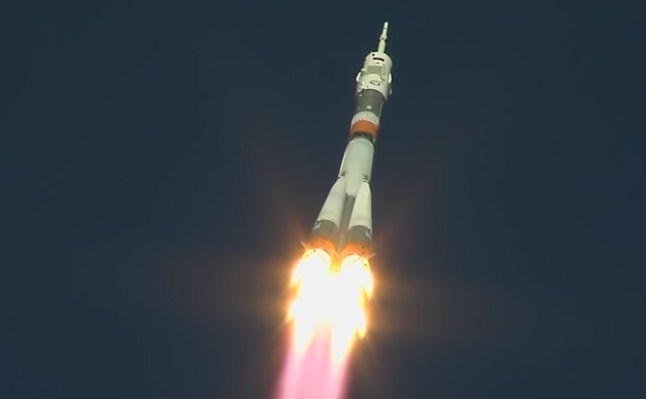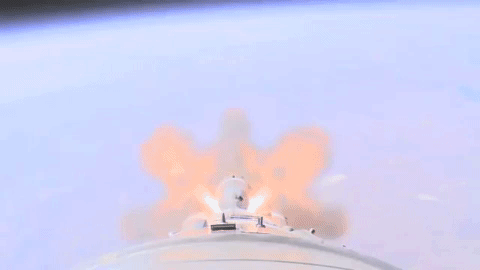The high-profile but fortunately non-lethal failure of a crewed mission atop a Soyuz rocket in October has been investigated thoroughly enough that American, European and Russian space agencies are willing to ride aboard the venerable launch system. Roscosmos announced that a crewed mission will fly to the International Space Station on December 3, less than two months after the anomaly.
It was clear from the moment of the accident, from which Astronaut Nick Hague and Cosmonaut Alexey Ovchinin drifted down to a safe landing, that whatever the global space community decided to do, they needed to do it fast. Soyuz is the only rated and tested crew launch system out there, and if it were to be grounded for long the ISS would soon be untenanted.
Fortunately Roscosmos made the investigation of the failure a priority and today issued its findings:
The launch ended up with a launcher failure caused by abnormal separation of one of the strap-on boosters (Block D) that hit with its nose the core stage (Block A) in the fuel tank area. It resulted in its decompression and, as consequence, the space rocket lost its attitude control.
The abnormal separation was caused by the non-opening of the lid of the nozzle intended to separate aside Block D oxidizer tank due to the deformation of the separation sensor pin (bended by 6˚45‘). It was damaged during the assembling of the strap-on boosters with the core stage (the Packet) at the Baikonur Cosmodrome.
So basically one of the boosters got stuck and the stages couldn’t separate properly. You can see it happen in the footage released by Roscosmos today. I’ve made a gif of the relevant part; the booster on the left clearly doesn’t come off properly like the others, and that causes the whole rocket to change attitude.
There would have been no doubt inside the capsule that things had gone totally sideways, literally and figuratively.
The issue was identified by investigators and other possibly affected rocket assemblies isolated, and already another Soyuz rocket (though a different model; there are several with very similar names) has taken off.
More importantly the authorities are confident enough in this explanation and in the Soyuz system that two missions have already been scheduled: a cargo mission on November 16 and a crewed one on December 3.
Cosmonaut Oleg Kononenko, NASA’s Anne McClain and the Canadian Space Agency’s David Saint-Jacques will be on board. Will they be more nervous because of the recent failure, or less nervous because of the excess scrutiny to which their vehicle will have been subjected? Probably a little bit of both.

